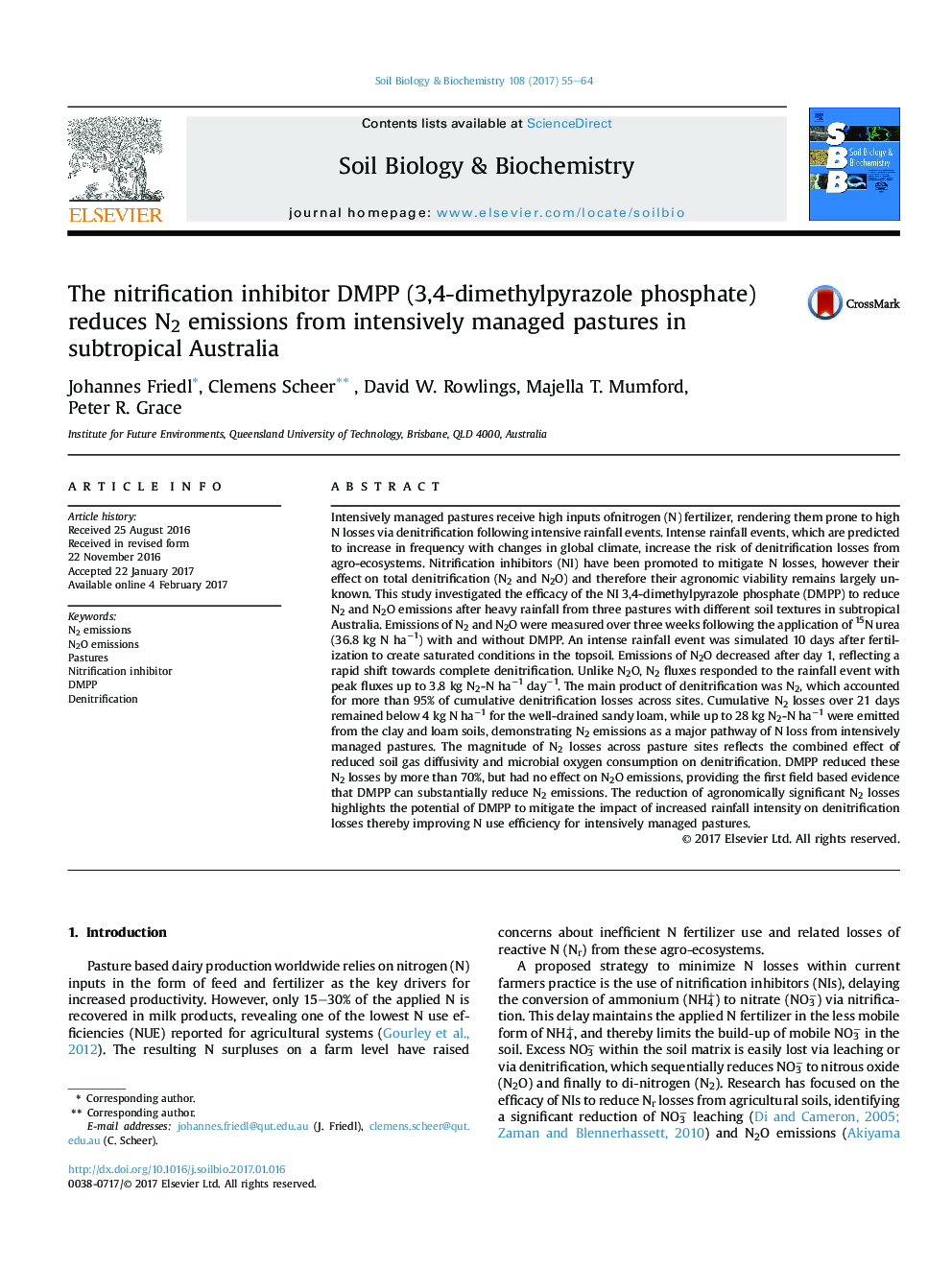| کد مقاله | کد نشریه | سال انتشار | مقاله انگلیسی | نسخه تمام متن |
|---|---|---|---|---|
| 5516535 | 1542576 | 2017 | 10 صفحه PDF | دانلود رایگان |

- First field study to evaluate the efficacy of DMPP to reduce N2 and N2O emissions.
- Mineralization of SOM contributed with more than 70% to N2 and N2O emissions.
- DMPP reduced agronomically significant N2 emissions by more than 70%.
- Reduced N2 loss shows decoupling between the effect of DMPP and N fertilizer.
- The significant reduction of N2 losses makes the use of DMPP agronomically viable.
Intensively managed pastures receive high inputs ofnitrogen (N) fertilizer, rendering them prone to high N losses via denitrification following intensive rainfall events. Intense rainfall events, which are predicted to increase in frequency with changes in global climate, increase the risk of denitrification losses from agro-ecosystems. Nitrification inhibitors (NI) have been promoted to mitigate N losses, however their effect on total denitrification (N2 and N2O) and therefore their agronomic viability remains largely unknown. This study investigated the efficacy of the NI 3,4-dimethylpyrazole phosphate (DMPP) to reduce N2 and N2O emissions after heavy rainfall from three pastures with different soil textures in subtropical Australia. Emissions of N2 and N2O were measured over three weeks following the application of 15N urea (36.8 kg N haâ1) with and without DMPP. An intense rainfall event was simulated 10 days after fertilization to create saturated conditions in the topsoil. Emissions of N2O decreased after day 1, reflecting a rapid shift towards complete denitrification. Unlike N2O, N2 fluxes responded to the rainfall event with peak fluxes up to 3.8 kg N2-N haâ1 dayâ1. The main product of denitrification was N2, which accounted for more than 95% of cumulative denitrification losses across sites. Cumulative N2 losses over 21 days remained below 4 kg N haâ1 for the well-drained sandy loam, while up to 28 kg N2-N haâ1 were emitted from the clay and loam soils, demonstrating N2 emissions as a major pathway of N loss from intensively managed pastures. The magnitude of N2 losses across pasture sites reflects the combined effect of reduced soil gas diffusivity and microbial oxygen consumption on denitrification. DMPP reduced these N2 losses by more than 70%, but had no effect on N2O emissions, providing the first field based evidence that DMPP can substantially reduce N2 emissions. The reduction of agronomically significant N2 losses highlights the potential of DMPP to mitigate the impact of increased rainfall intensity on denitrification losses thereby improving N use efficiency for intensively managed pastures.
Journal: Soil Biology and Biochemistry - Volume 108, May 2017, Pages 55-64